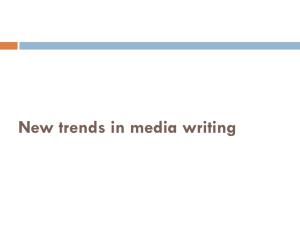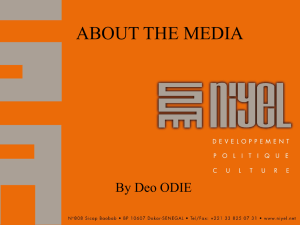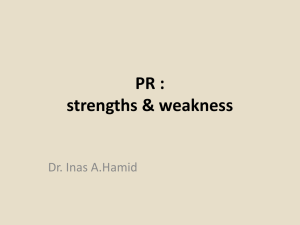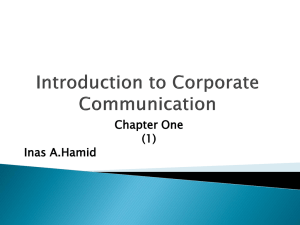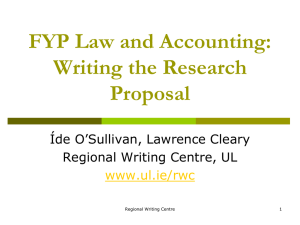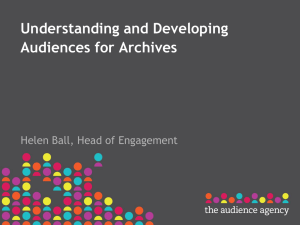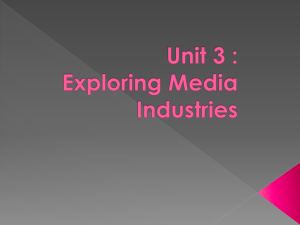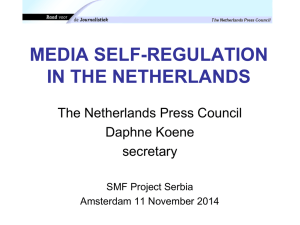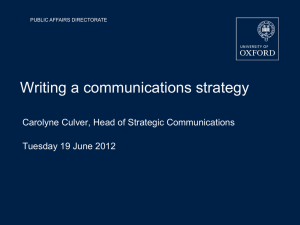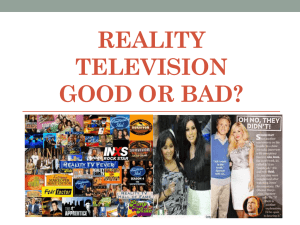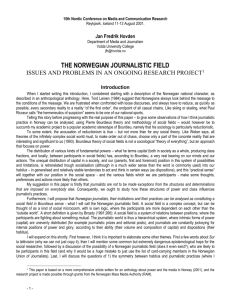Public Relations Writing - James Madison University
advertisement
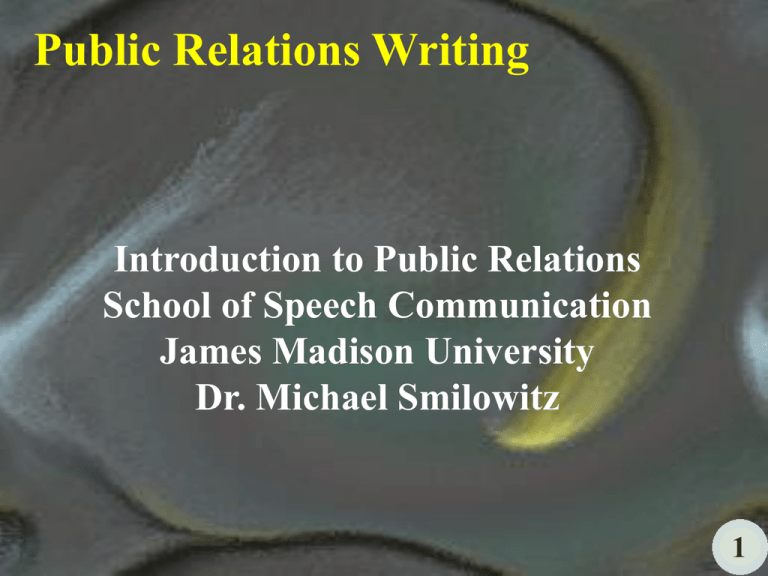
Public Relations Writing Introduction to Public Relations School of Speech Communication James Madison University Dr. Michael Smilowitz 1 What to expect? • Discuss the rhetorical contract. • Distinguish journalistic writing from public relations writing. • Describe the types of writing done by pr specialists. • Begin discussing the press release. 2 Public Relations Writing “Writing does not take place in a vacuum. Every writer works within the framework of individual experience, the proper use of the English language, a sense of personal values, the purpose of the message, and the effect it is intended to have on the audience. Public relations writing is no different.” Wilcox and Nolte, in Public Relations: Writing and Media Techniques 3 The Rhetorical Contract: In exchange for an audiences’ attention, speakers, or writers, are promising to provide audiences with something worthwhile. To make sure the audience will regard the message as worthwhile, speakers and writers, engage in a: Rhetorical Shift 4 The Rhetorical Shift: Preparing a message from your point of view is not likely to achieve a positive outcome. To help assure the success of the message, it is essential to anticipate how the audience will regard the message from their own point of view. 5 Differences between Journalistic and Public Relations Writing: There are at least three differences: • Goals • Audiences • Channels 6 Differences between Journalistic and Public Relations Writing: Differences in goals: Journalistic goals: • Provide news • Attract audiences • Appear objective Pr goals: • Advocacy for client • Attract media gatekeepers • Appear fair minded 7 Differences between Journalistic and Public Relations Writing: Differences regarding audiences: Journalism • Audiences are not carefully researched by journalists. • Journalists write for the audience of the medium for which they work. • Audiences are regarded as consumers. Public Relations • Audiences are carefully identified • Pr writers write for a wide variety of audiences. • Audiences are regarded as important to the client’s needs. 8 Differences between Journalistic and Public Relations Writing: Differences regarding channels: Journalism • Journalists write typically for just one channel (medium). • Journalists have the channel chosen for them. Public Relations • Pr writers write for a variety of channels. • Pr writers often pick the best channels for particular purposes. 9 What do PR specialists write? • Fact sheets Descriptions of the who, what, where, when, why, and how of an issue or an organization in a brief, easy to read format. Fact sheets are designed to be informational, rather than strategic. Biographical sketches Fact sheets written about key individuals in the client organization, including issue spokespeople and special employees. 10 What do PR specialists write? • Backgrounders Broad reports, sometimes summaries, to provide journalists, and others, a detailed familiarity with the client • Position papers Arguments that support the clients position on an issue, or group of related issues. 11 Evaluating the writing Beyond the obvious necessities of readability and grammatical correctness, written messages should be assessed for their functional effectiveness. 12 Evaluating the writing Patrick Jackson,editor of pr reporter, lists five questions: 1. Is the message appropriate? Messages must be appropriate to both the sender and the receiver. 2. Is the message meaningful? A message is meaningful if it sticks to its subject and provides information the audience deserves to know. 13 Evaluating the writing 3. Is the message memorable? A message is memorable if it is geared to the interests of the audience, and includes verbal, graphic, and sometimes aural imagery. 4. Is the message understandable? To be understandable, the message must be within the audience’s frame of reference and experiences. 5. Is the message believable? For a message to be believable its source must be regarded as trustworthy and credible. 14 The news release The news release is the “meat and potatoes” of public relations writing. Tucker, Derelian and Rouner, point out that PR professionals must be every bit as good (maybe even better) than journalists at: 1. Knowing the needs of the audience to whom they are writing. 2. Knowing the needs of the medium for which they are writing. 3. Spotting a good news opportunity. 4. Writing a basic news story. 15 The news release Tucker, Derelian and Rouner also identify six questions to ask to see if a story really is news”: 1. Is it new, different, or unusual (or can it be packaged as such)? 2. Does it have a sense of immediacy? It it timely? 3. Does it affect great numbers of people? 4. Does it involve a prominent individual or organization? 5. Is it controversial? 6. Is it local? 16 Where are news releases sent? • • • • • • • Daily newspapers Community newspapers Magazines Specialty publications Wire services Local radio stations Local and national television stations. 17
